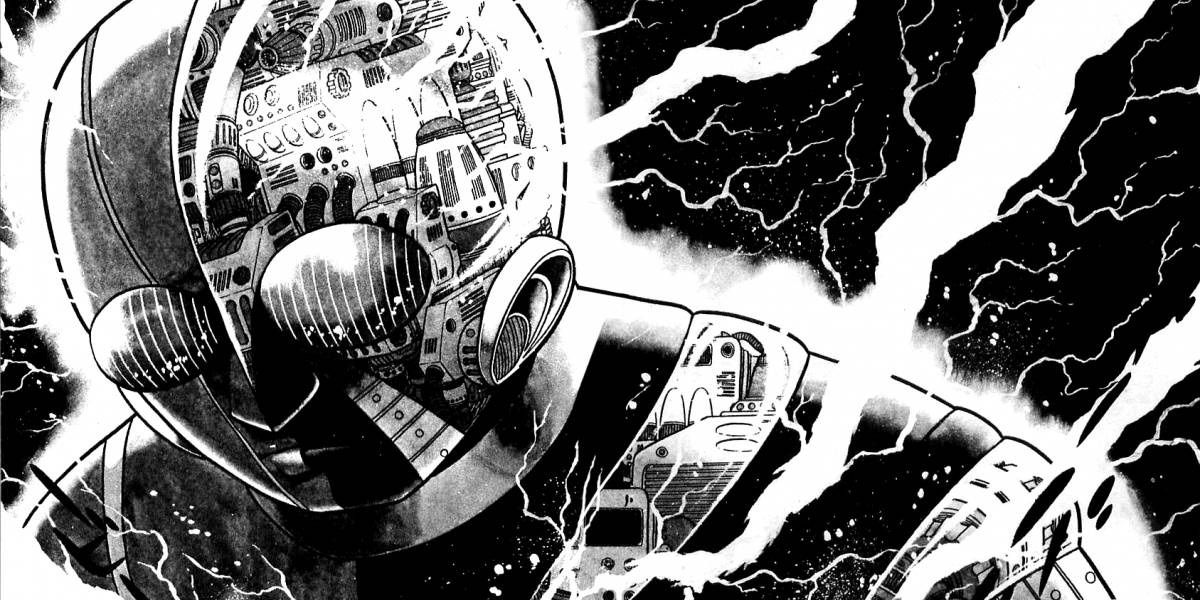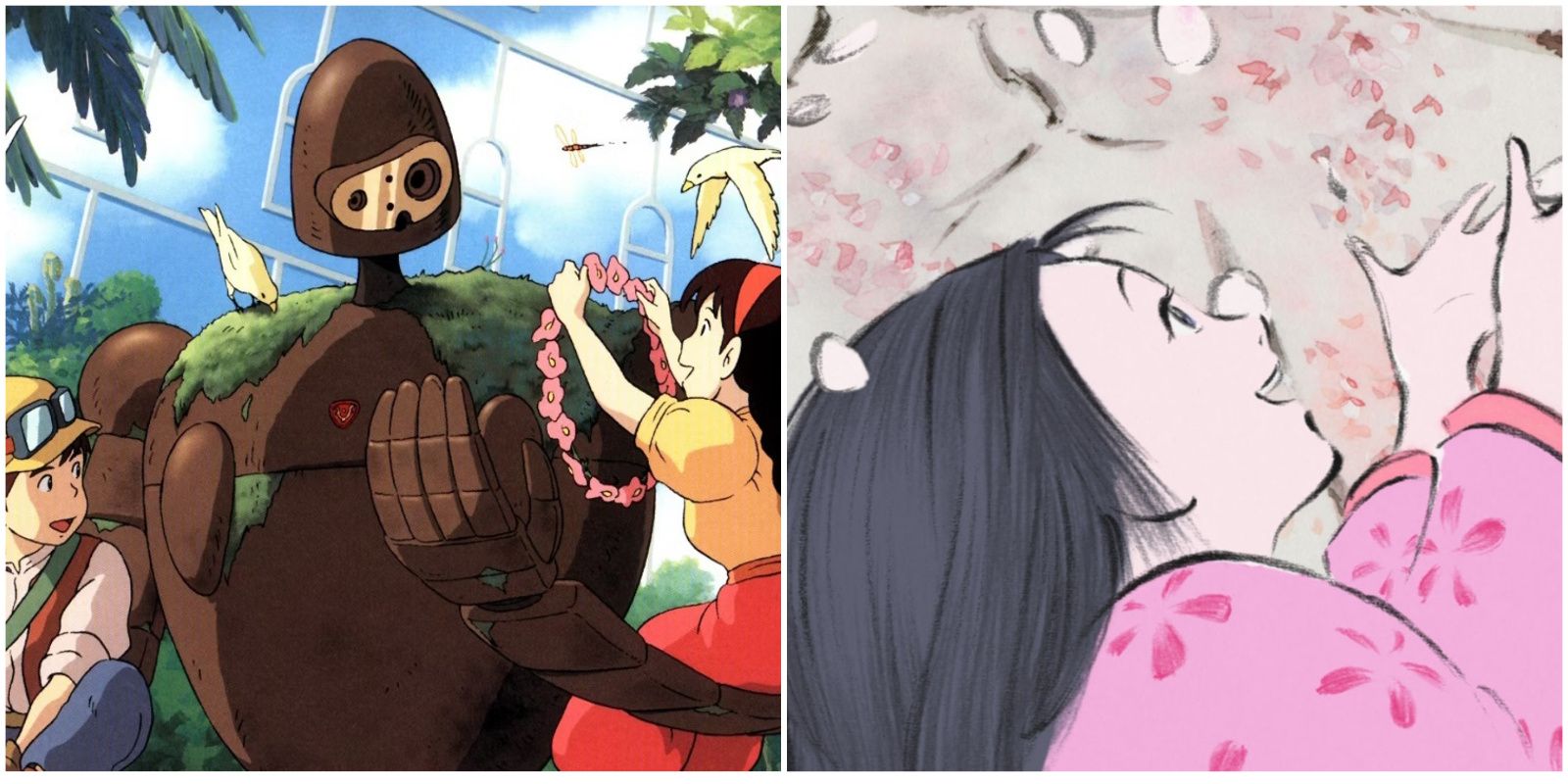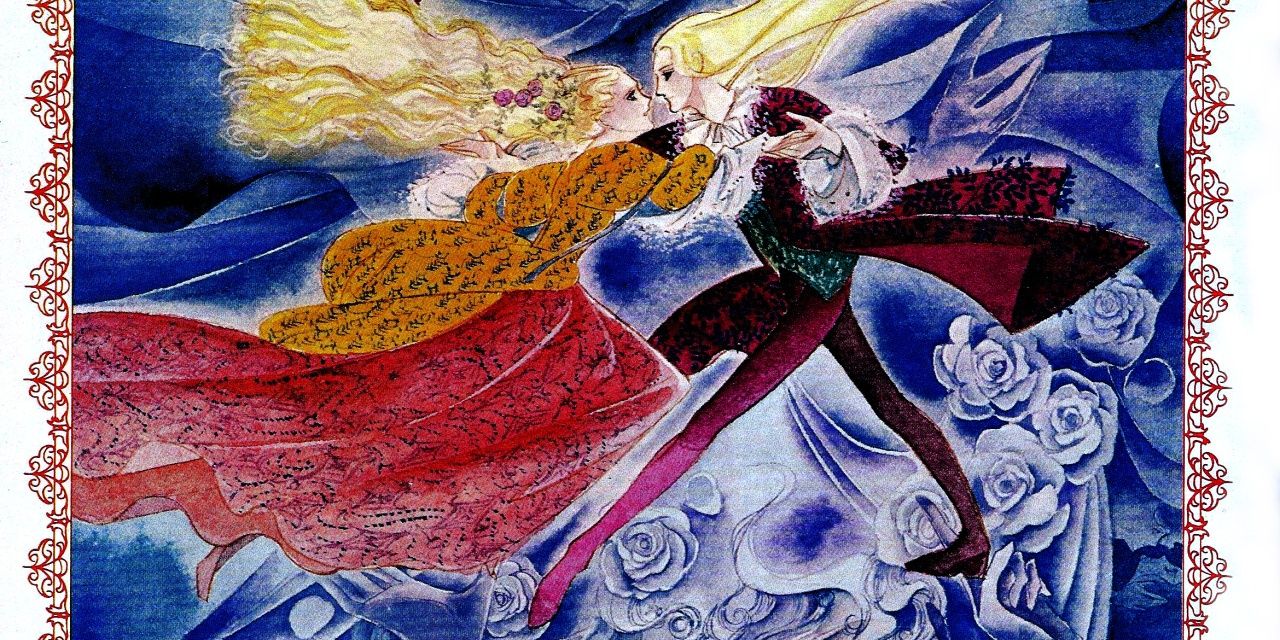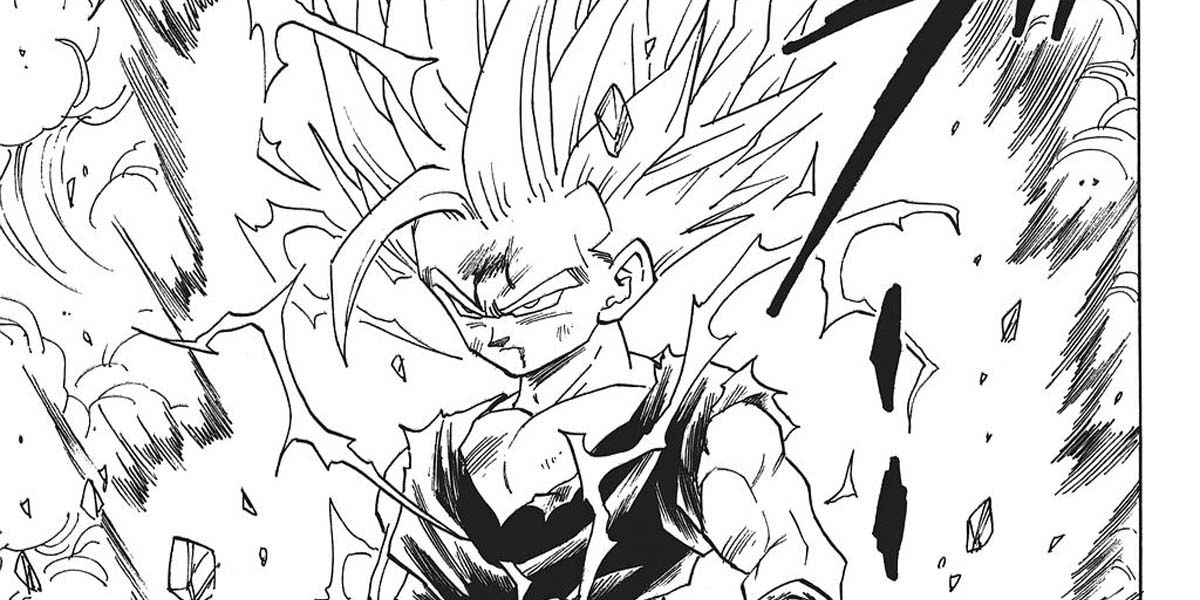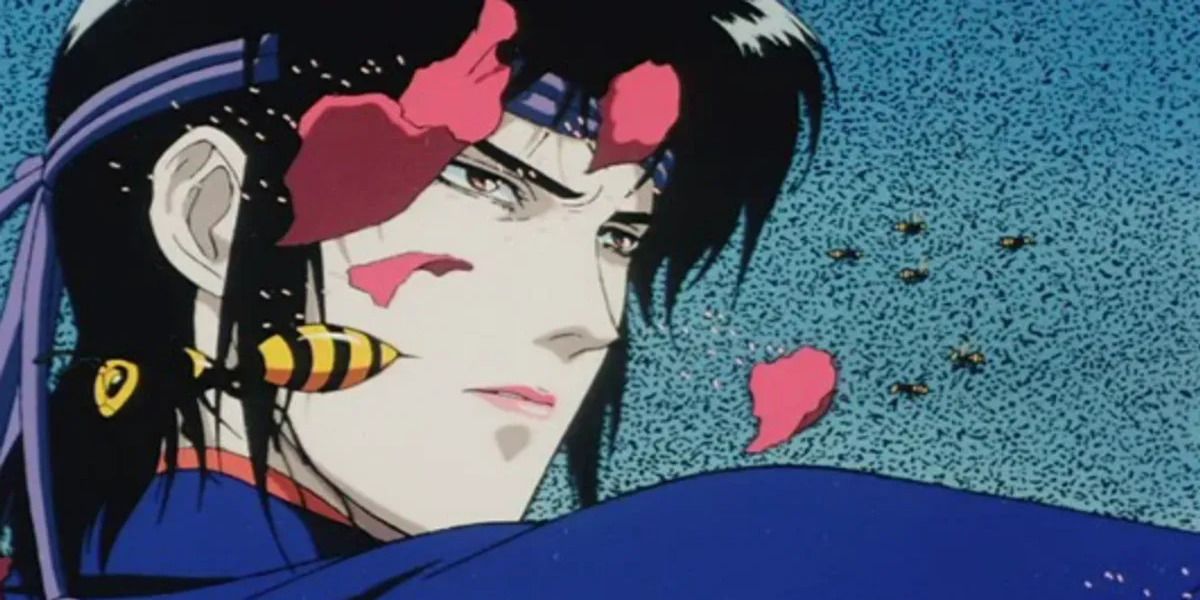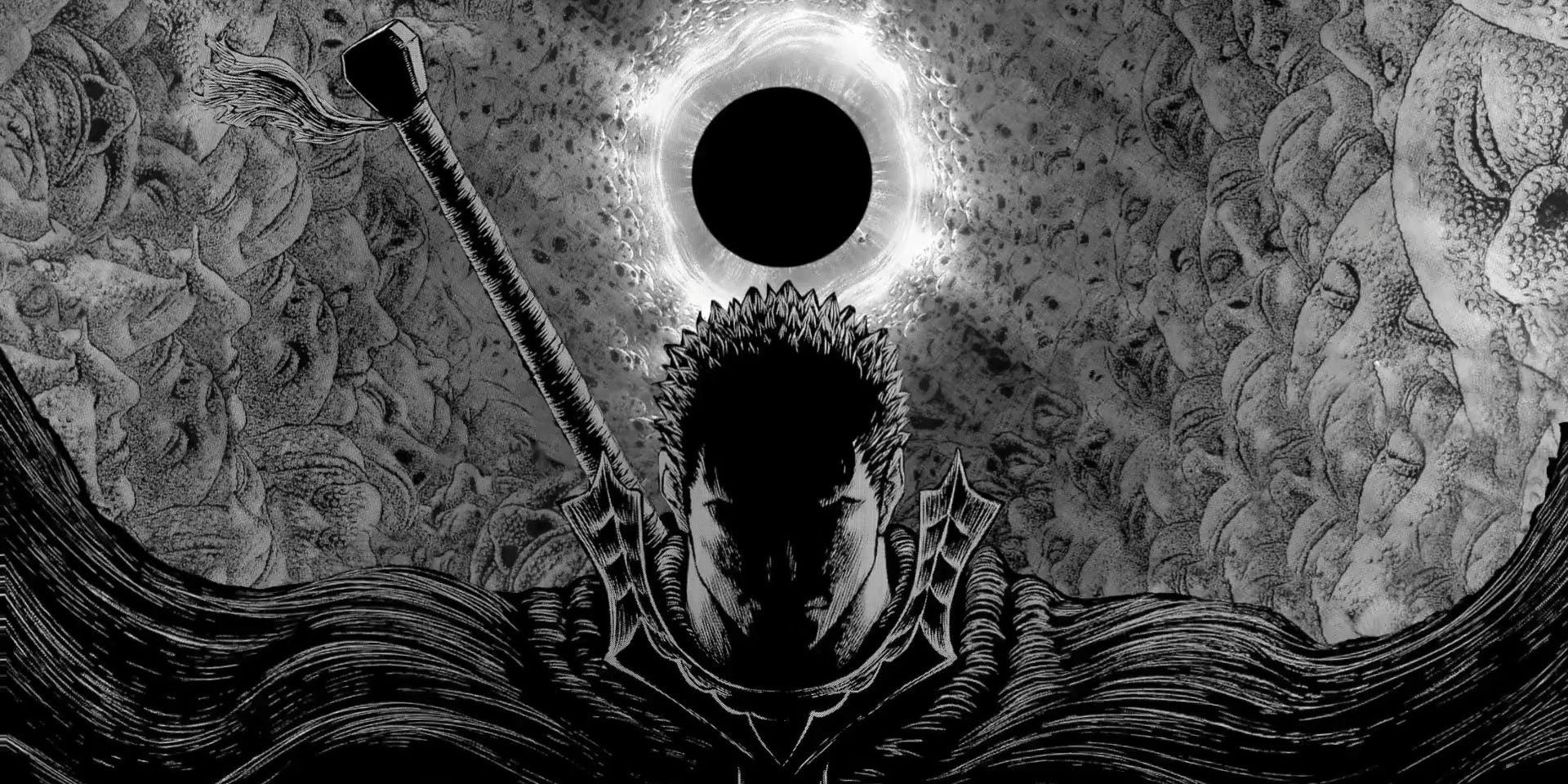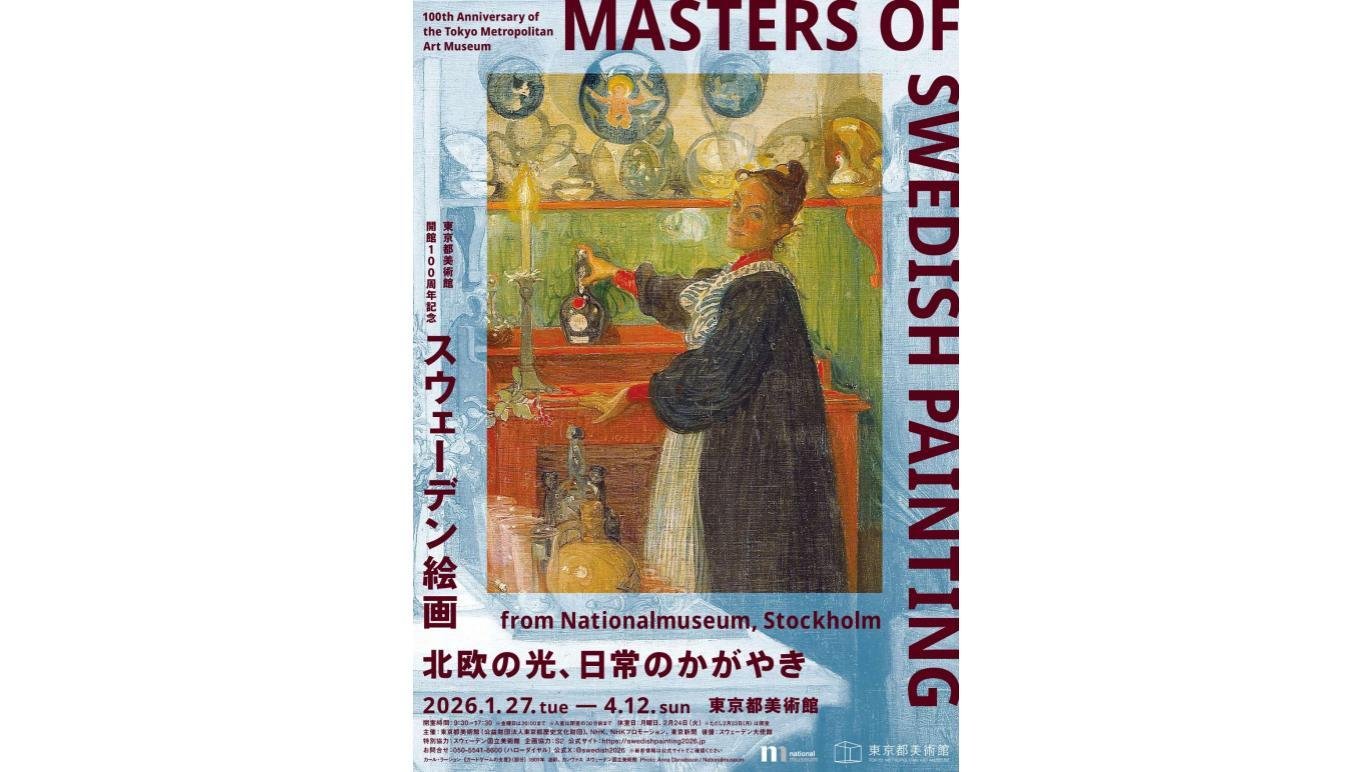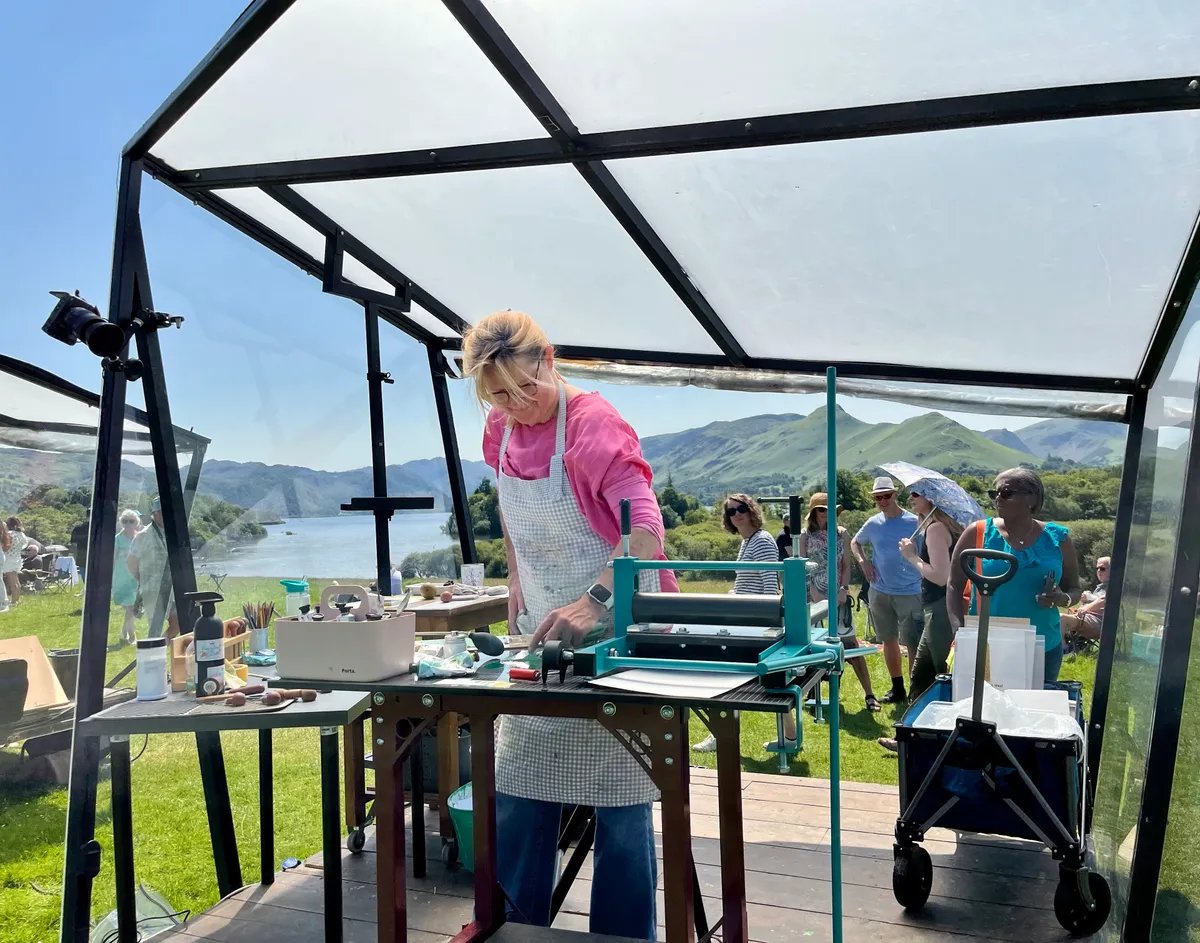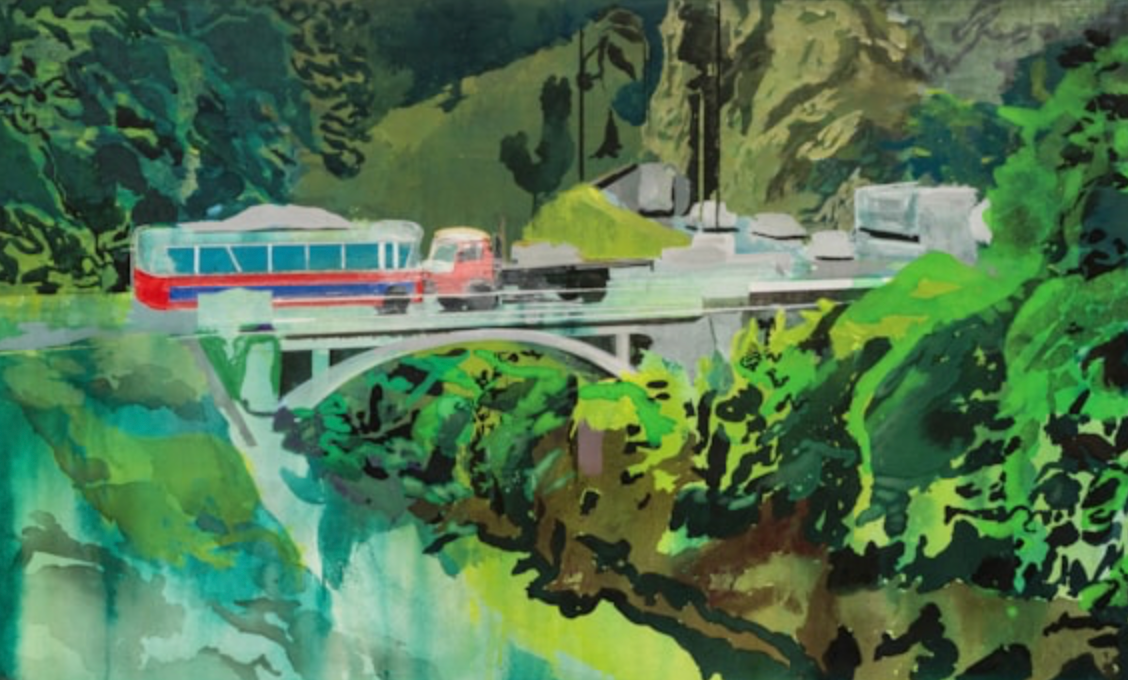Highlights
- Every artist brings their unique spin to drawing iconic characters, influencing generations to follow.
- The distinct art styles of manga legends like Tezuka and Matsumoto have inspired modern anime worldwide.
- From Osamu Tezuka to Masashi Kishimoto, each artist’s visual storytelling enriches the impact of their work.
Anime and manga alike are visual mediums formed from lots and lots of drawings. This sounds pretty obvious, but people can underestimate just how many ways there are to draw the same thing. Due to a myriad of factors, every individual draws differently and is drawn to different visual forms of expression.

19 Anime Characters With The Most Emotional Backstories
Across the world of anime, plenty of characters have faced tragedy in their pasts. These backstories tug fans’ heartstrings the hardest.
Once the skills of an animator or a mangaka are on the table, these small variations can evolve into wildly different and unique art styles. Every artist has their unique spin on the series they draw, but the art styles of these iconic anime and manga artists have stood the test of time and become so well known that they’ve inspired millions to follow in their footsteps.
Updated April 28, 2024 by David Heath: No matter their skill, subjects, or stories, every artist has an impact. The ninja drama in Naruto and pirate antics in One Piece wouldn’t be entertaining readers today if their creators, Masashi Kishimoto and Eiichiro Oda respectively, hadn’t read the more kiddy adventures of Doraemon in their youth.
Then Goseki Kojima’s artwork for Lone Wolf & Cub went beyond Japan and would inspire Frank Miller’s own stark, moody art for The Dark Knight Returns. Thus, this list has been updated with more influential anime/manga art styles, and the artists behind them. These include the aforementioned Kojima and the duo behind Doraemon, alongside a few more new additions.
1 Osamu Tezuka
The Godfather Of Manga
- Anime/Manga Debut: 1946
- Notable Works: Astro Boy, Phoenix, Black Jack
As one of the progenitors of modern anime and manga, this list had to start with Osamu Tezuka. Even the most modern works can trace their lineage back to Tezuka’s oeuvre. While Astro Boy was by far his most popular creation, he also was behind titles like the samurai adventure Dororo, the animal drama Jungle Emperor Leo (aka Kimba the White Lion), and the feminist fairy tale Princess Knight, among others.
Taking inspiration from classic Western cartoons like Betty Boop and Disney’s Donald Duck shorts, Tezuka introduced manga and anime’s most iconic traits, like large, round eyes and tiny noses. Along with the simplicity and general softness of his characters, it made his style distinct and recognizable, particularly in the homages shown in Star Wars Visions, and Naoki Urasawa’s Astro Boy adaptation Pluto.
2 Fujiko Fujio
Manga’s Most Iconic Duo
- Anime/Manga Debut: 1951
- Notable Works: Obake no Q-Taro, Perman (together), Doraemon, Pokonyan (Fujimoto alone), Ninja Hattori-kun, The Black Salesman (Abiko alone)
Astro Boy, Dragon Ball‘s Goku, and Naruto have become household names in their own right. But within Japan itself, they’re arguably beaten out by Doraemon. The time-traveling robot cat is as familiar within the nation as Mickey Mouse and Snoopy and, while he didn’t quite catch on in the West, became popular in the East. Taiwan produced its own unofficial Doraemon anime, and Vietnam named a scholarship fund after the character.
He was created by Hiroshi Fujimoto, better known as one-half of Fujiko Fujio with Moto Abiko. Together, the two became the biggest names in children’s manga, producing the ghostly comedy Obake no Q-Taro and the superhero story Perman. Apart, Fujimoto would stick to child-friendly fare, while Abiko went into darker territory with The Laughing Salesman. Nonetheless, they’d inspire generations of mangaka to pick up a pen, from Naruto‘s Masashi Kishimoto to Death Note‘s Takeshi Obata.
3 Shotaro Ishinomori
The King Of Manga
- Anime/Manga Debut: 1954
- Notable Works: Cyborg 009, Genma Wars, Kamen Rider
Many famous mangaka got their start as assistants to more established artists. They would sketch background details, handle page inking, and more. One of the most famous artists to get their start this way was Shotaro Ishinomori. He was taken on by Tezuka himself after he was impressed with an entry Ishinomori made for a talent contest. As such, Ishinomori’s style bears a strong resemblance to Tezuka’s.
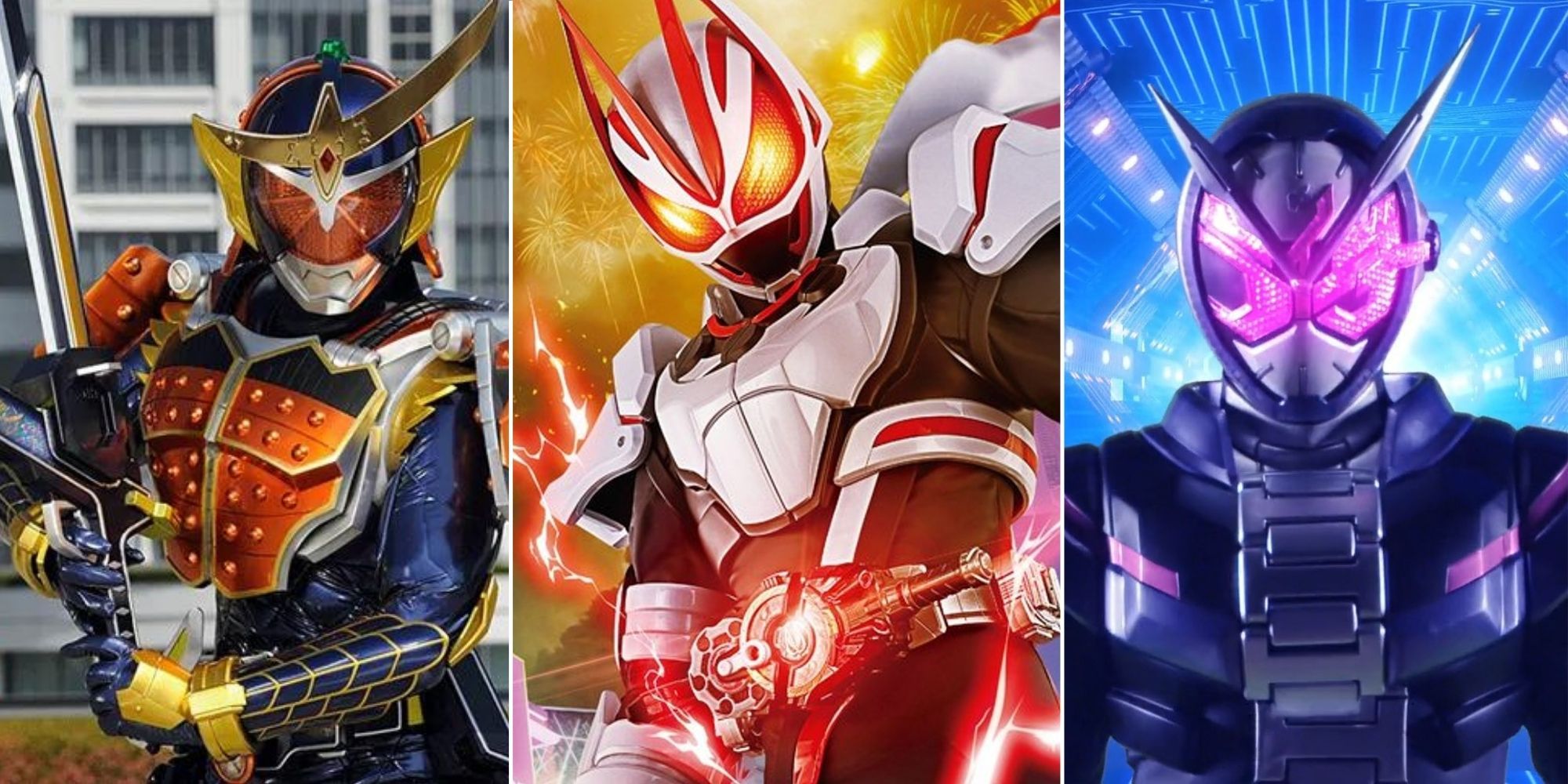
8 Best Kamen Rider Series & Movies For Beginners
The Kamen Rider franchise has a ton of content to watch. Here’s where beginning fans can get started without confusion.
However, Ishinomori would soon branch out into his own style. He’s most famous for his superheroic androids. Cyborg 009 gave Japan its first superhero team, and Kamen Rider revitalized the tokusatsu shows into what fans recognize today. He also used manga to tell more serious stories, like the hard-boiled feudal-era crime drama Sabu and Ichi’s Detective Memoirs, and the psychedelic psychic adventure Genma Wars, which would get a young Katsuhiro Otomo into animation directing.
4 Leiji Matsumoto
The Grandfather Of Anime
- Anime/Manga Debut: 1954
- Notable Works: Galaxy Express 999, Space Battleship Yamato, Space Pirate Captain Harlock
If people don’t recognize Leiji Matsumoto‘s name, they’ll certainly recognize his art style. His space opera stories rung a chord in Japan, with Space Battleship Yamato alone inspiring a wide range of sources. Its intergalactic battles paved the way for Mobile Suit Gundam and Robotech‘s different series. Captain Harlock inspired the design for Sailor Moon‘s Tuxedo Mask and may have even inspired Tezuka when he made Black Jack.
Perhaps the only country that loved Matsumoto’s work as much as Japan, if not more, was France. The anime adaptations of Harlock and Galaxy Express 999 became mainstays in the country during the 1970s and opened the door for anime and manga there. It was enough for Matsumoto to be ordained as a Chevalier in France’s Ordre des Arts et des Lettres, an honor also awarded to (but later renounced by) Daft Punk, who got Matsumoto to oversee their movie Interstella 5555.
5 Goseki Kojima
Samurai Epics In Print
- Anime/Manga Debut: 1957
- Notable Works: Lone Wolf & Cub, Path of the Assassin, Samurai Executioner
Kazuo Koike is famous in the world of manga, having told a broad range of stories across his multi-decade career. One of his most famous pieces, if not THE most famous piece, is Lone Wolf & Cub, about a samurai avenging the death of his clan while raising his last surviving child. It inspired the graphic novel and award-winning drama Road to Perdition, and the “video nasty” Shogun Assassin. But Koike was just one-half of the strip’s “Golden Duo,” and he was the writer.
The illustrator was Goseki Kojima, who became famous in his own right for bringing historical epics and novels to life with his drawings. Whether he was using inks or paints, he brought out the beauty and brutality of feudal Japan without embellishment. He made clashes feel as dramatic as any shōnen power-up by just drawing them as is, just as his favorite film director Akira Kurosawa did for his samurai movies. As such, they’re a must-read for readers who want a pure samurai epic without bankais and other gimmicks.
6 Hayao Miyazaki & Isao Takahata
The Men Behind Ghibli
- Anime/Manga Debut: 1961 (Takahata), 1963 (Miyazaki)
- Notable Works: Lupin the 3rd: The Castle of Cagliostro, Spirited Away (Miyazaki), Grave of the Fireflies, The Tale of the Princess Kaguya (Takahata)
Through its ups and downs, Studio Ghibli has become the king of anime films. Over the years, movies like Spirited Away and My Neighbor Totoro have helped the studio and their distinct style become recognizable worldwide, even to non-anime fans. It doesn’t take much effort to find tutorials on how to mimic the distinct way they draw welled-up tears, or their soft-edged, wide-eyed humans.

8 Manga To Read If You Love Studio Ghibli
Studio Ghibli is responsible for some of the most beloved films, and for fans that want more of this, check out these manga recommendations
The style was produced by Hayao Miyazaki and Isao Takahata, who founded the studio after 20 years of providing work for Toei, Shin-Ei Production, and other studios. It was there that they developed the pastoral energy that would make their works welcoming and wholesome to look at, even in darker works like Princess Mononoke. It’s managed to fit Western fantasy stories like Arriety, an adaptation of The Borrowers, as comfortably as it has homegrown Japanese ones like Pom Poko and Only Yesterday.
7 Kuniko Tsurita
The Lesser-Known Legend
- Anime/Manga Debut: 1965
- Notable Works: The Tragedy of Princess Rokunomiya, Money, Max
Kuniko Tsurita rarely got published in the big magazines or got plaudits. Her work featured a lot of action, inspired by the crime dramas and pulp novels she’d read alongside shojo stories. For anyone else, that would be fine. But to the editor of The City magazine, this wasn’t something women should illustrate. He said, that rather than make action stories, she should “draw about girls instead.”
Tsurita opted not to do that and got her work published in the alt-magazine Garo. They’d showcase her stark, dark artwork featuring androgynous figures, social commentary, and dramatic imagery that contributed to gekiga – an older term for mature manga. Tsurita wouldn’t become a household name, but she broke ground for other women mangaka who wanted to tell deeper stories, like Riyoko Ikeda and Rumiko Takahashi.
8 Ryoichi Ikegami
Gekiga Grandmaster
- Anime/Manga Debut: 1966
- Notable Works: Crying Freeman, Mai The Psychic Girl, Sanctuary, Heat
Kazuo Koike is most famous for working with Goseki Kojima, but he wasn’t the only artist he worked with. One of his notable works, Crying Freeman, was brought to life by the illustrative skill of Ryoichi Ikegami. Even by then, Ikegami had already made his name for his realistic, mature artwork.
He made his name drawing hard-boiled seinen stories like Freeman, Sanctuary, and Trillion Game, offering a more suave and sensual touch compared to Kojima. But it was his dark shōnen tales that caught readers’ attention. His dystopian take on Marvel’s webhead, Spider-Man: The Manga, caught on better with Japanese readers in the 1970s. Mai the Psychic Girl‘s more grounded take on psychic powers and conspiracies was one of the first manga to make waves in the West pre-Akira.
9 Go Nagai
“Uncle Go”
- Anime/Manga Debut: 1967
- Notable Works: Harenchi Gakuen, Mazinger Z, Cutie Honey
As influential as Tezuka and Ishinomori’s works are, Go Nagai is arguably on par with them. Just as Ishinomori was an assistant to Tezuka, Nagai was an assistant to Ishinomori and developed a style that resembled his senior’s work. But he’d take it in a more mature direction. For example, Harenchi Gakuen, while tame by today’s standards, essentially became the first ‘ecchi’ series.

Best Manga By Go Nagai, Ranked
Go Nagai is a household name in the world of manga. These are some of his best works.
Afterward, his Mazinger Z series gave mecha human pilots, creating the Super Robot genre that would lead to Mobile Suit Gundam and Neon Genesis Evangelion. Devilman got gothic and bloody, and its spin-off Violence Jack brought post-apocalyptic action to readers a decade before Fist of the North Star. While his work could be controversial with its extreme content, it opened the door for more mature-themed manga down the line.
10 Riyoko Ikeda
The Shojo Pioneer
- Anime/Manga Debut: 1967
- Notable Works: Rose of Versailles, The Window of Orpheus, Claudine
The shojo genre doesn’t often get a lot of attention. Sure, everyone knows Sailor Moon or the like. But their creators are rarely as recognized as their shōnen and seinen counterparts, even if they’re just as influential. For example, nearly every shojo manga since the 1970s was inspired by Riyoko Ikeda. Her thin characters, pointy chins, soft colors, intricate patterns, and big, sparkly eyes have essentially defined the genre.
Nana, Chihayafuru, Hana Yori Dango and more have elements drawn from Ikeda’s style. Then Revolutionary Girl Utena and Sailor Moon, while more distinct, still take on traits from Ikeda’s work in both content and design. Her work would also transcend the genre, as elements of her style would appear in grimmer epics like Berserk. Griffith’s pretty looks and curls resemble Ikeda’s Claudine or Rose of Versailles‘ Oscar.
11 Moto Hagio
The God Of Shojo Manga
- Anime/Manga Debut: 1969
- Notable Works: The Poe Clan, They Were 11, A Cruel God Reigns
Ikeda wasn’t the only shojo artist breaking boundaries in the 1970s. She was one of a range of artists informally known as the “Year 24 Group.” Named after 1949, the 24th year of the Showa era (1926-1989) and when most (but not all) of its artists were born, these mangaka wanted to tell more complex stories involving more daring, mature themes in the shojo genre. The powers-that-be that pushed Tsurita into alt-magazines now gave way to the Year 24 group.
As influential as Ikeda is, she’s rivaled by Moto Hagio. Her style has all the shojo hallmarks. Yet her colors would be cooler, her expressions more melancholy, which brought out the most in stories like the gothic horror-romance of The Poe Clan, and the feminist sci-fi series They Were 11 and Marginal. The way they expressed sexuality and gender identity is still daring today.
12 Yoshikazu Yasuhiko & Kunio Okawara
The Men Behind The Mechs
- Anime/Manga Debut: 1972
- Notable Works: Mobile Suit Gundam, Brave series
Mobile Suit Gundam has gone on to become anime and manga’s premier mecha series, combining Leiji Matsumoto’s space operatics with Go Nagai’s piloted mecha. Practically every Japanese robot series was inspired to one degree or another by MSG, from Evangelion to Gurren Lagann. Yet, unlike some other iconic works, it can’t be credited to one person.

Gundam: 23 Best Anime Series To Start With
Gundam is a popular mecha anime that has an overwhelming number of series, but thankfully this is the best list to begin your Gundam journey.
The official creators are writer Yoshiyuki Tomino and ‘Hajime Yatate,’ a pseudonym made to represent all the contributions that the Sunrise animation staff made. The greatest contributions arguably came from designers Yoshikazu Yasuhiko and Kunio Okawara. Yasuhiko designed most of the human characters. Okawara designed the mechs, including the iconic RX-78-2 Gundam, which received its own models, statues, and other tributes.
13 Katsuhiro Otomo
The Creator Of Akira
- Anime/Manga Debut: 1973
- Notable Works: Akira, Memories, Steamboy
If Kamen Rider wasn’t enough to cement Ishinomori’s legacy, getting Katsuhiro Otomo into manga and anime would. As a child, he read manga by Tezuka and by Giant Robo creator Mitsuteru Yokoyama. But it was Ishinomori’s book How to Draw Manga that got him into drawing. It led to his early sci-fi strips Fireball and Domu, whose stories of tech run amok and psychic powers led to Akira.
Otomo’s art was more grounded, with rich details that brought his grim cyberpunk worlds to life. His stint as a character designer on Harmageddon (the anime adaptation of Ishinomori’s Genma Wars) inspired him to direct his own work. His meticulous attention to detail made the Akira movie a technical spectacle and showed the world that animation in general could be more than kids’ stuff.
14 Rumiko Takahashi
The Princess Of Manga
- Anime/Manga Debut: 1978
- Notable Works: Urusei Yatsura, Ranma 1/2, Inuyasha
Not every shojo mangaka followed Ikeda’s pastel prettiness. Rumiko Takahashi made her name with her more cartoony characters with their round faces and bold expressions. Whether she was making more combat-heavy, shonen-like series like Inuyasha and Ranma 1/2, or romcoms like Urusei Yatsura and Maison Ikkoku, her style never looked out of place.
Her cutesy designs appealed to the shojo crowd, while her action scenes and gags pulled in the shōnen fans, and her storytelling got due attention from older audiences too. As gentle as they look, Takahashi’s characters are versatile and have a universal artistic appeal to anime and manga fans.
15 Akira Toriyama
“The Ultimate Ruler Of The Dragon World”
- Anime/Manga Debut: 1978
- Notable Works: Dr Slump, Dragon Ball, Sand Land
Dragon Ball is easily Akira Toriyama’s most popular creation, as it introduced most people to his art style. However, some North Americans may have seen his work before the series’ Western debut via his design work for Chrono Trigger and Dragon Quest. Toriyama’s designs originally looked more cartoony, with Kid Goku and Dr Slump‘s Arale looking more cutesy with their big eyes, tiny noses, and childish proportions.
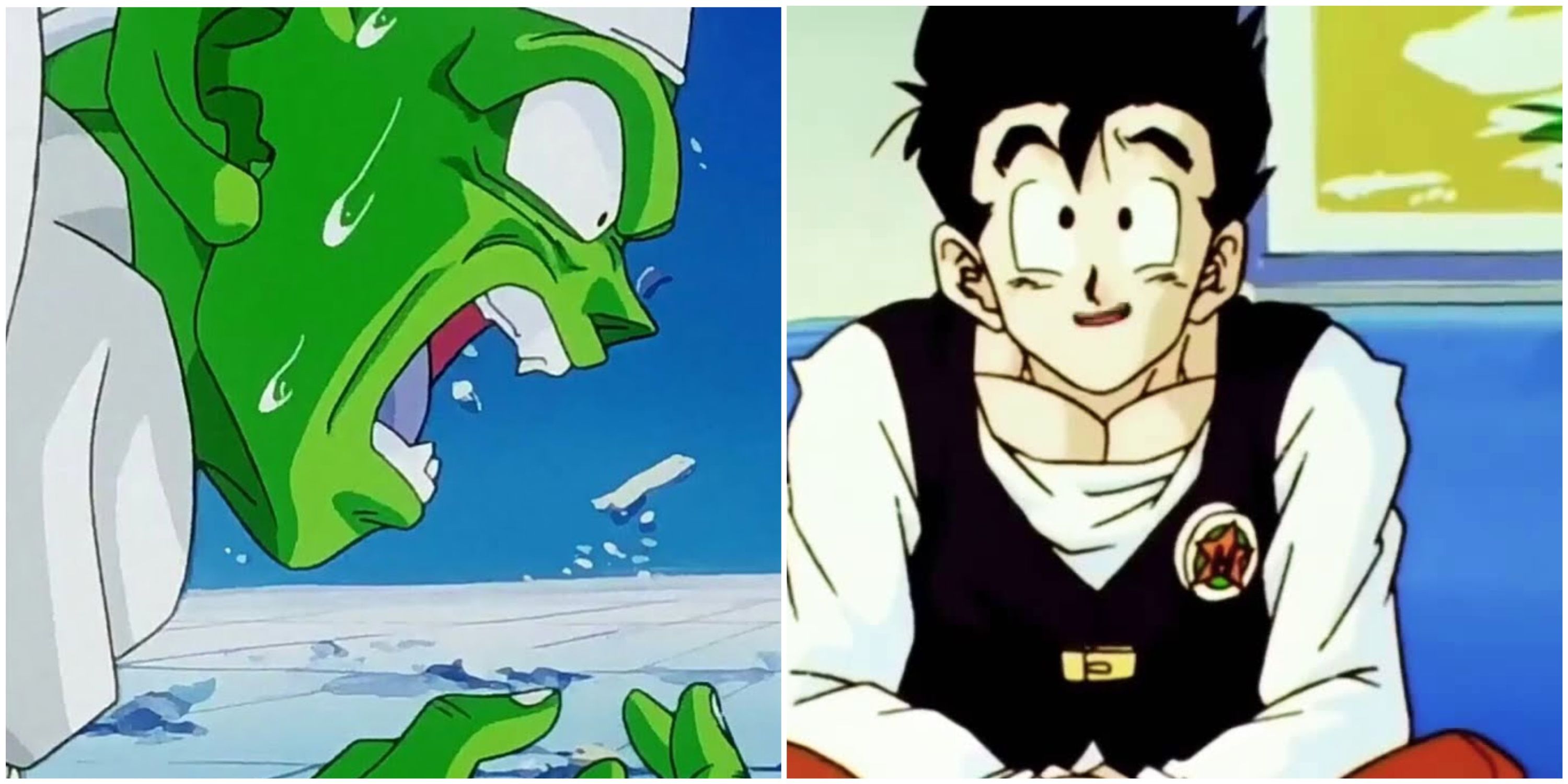
5 Dragon Ball Arcs That Are Better In The Manga
Dragon Ball fans may find these moments more satisfying on the page than onscreen.
But once Goku grew up in Dragon Ball Z, he and his fellow fighters got more buff and angular, with tight frowns and increasingly spiky hairstyles. Yet whether it was a fight for the fate of the universe or some visual gag, no one would mistake Toriyama’s art for anyone else’s. It’s this combo of cartoonish comedy and physical drama that would inspire other shōnen classics, like One Piece and Naruto.
16 Hirohiko Araki
Shōnen In Style
- Anime/Manga Debut: 1980
- Notable Works: Jojo’s Bizarre Adventure, The Lives of Eccentrics, Baoh
When Hirohiko Araki started, his manga work looked more akin to old Tatsunoko cartoons until other sources influenced his work. For example, the chiseled features of Jonathan, Joseph, Jotaro, and even Josuke in the early chapters of Diamond is Unbreakable, paid homage to Fist of the North Star‘s style. As the years went on, Araki’s style evolved into something more unique.
He combined his Kenshiro-alikes with other inspirations, like Classical and Renaissance sculptures, fashion photography, Antonio Lopez paintings, and Roger Dean’s psychedelic art. It resulted in art that looked dynamic, fashionable, and pretty. By the time Jojo‘s fame went global, Araki’s art had already impressed audiences in Japan and Europe enough to be exhibited in art galleries, including the Louvre itself.
17 Tetsuo Hara
Manga At Its Most Masculine
- Anime/Manga Debut: 1982
- Notable Works: Fist of the North Star, Hana no Keiji, Fist of the Blue Sky
If testosterone could be distilled into print, it would look like Tetsuo Hara‘s work on Fist of the North Star. Inspired by Tezuka, Ishinomori, and Koike & Kojima’s gekiga, Hara would work with writer Buronson in bringing their kung-fu-themed post-apocalyptic adventure to life. Hara’s style is personified by its buff, muscular men, giant foes, and dramatic images. He’d contrast scenes of grisly body horror with tender, heartstring-pulling moments.
Hara knew it’d take more than pure action to keep people reading. So he made his characters more emotional and willing to cry when things got too much for them to bear. Instead of making them look soft, it made them more human and more appealing than the stone-faced movie musclemen of the era. Hara’s style inspired other works like Hirohiko Araki’s Baoh, Akira Miyashita’s Sakigake! Otokojuku, its parody Cromartie High School, and Sega’s Yakuza/Like a Dragon series.
18 Shirow Masamune
Slick Cyberpunk
- Anime/Manga Debut: 1983
- Notable Works: Black Magic M-66, Ghost in the Shell, Appleseed
Cyberpunk comes in many forms. The works of Shirow Masamune combined cyborgs and robots with fanservice. The shapely looks of Black Magic M-66‘s Sybil, Dominion Tank Police‘s Puma Twins, and Ghost in the Shell‘s Major Motoko Kusanagi are as famous as the series they come from. However, there was more to Masamune’s work than cyborg pin-ups.

Ghost in the Shell: Best Versions of Motoko Kusanagi, Ranked
Makoto Kusanagi has been a recurring character throughout the entirety of Ghost in the Shell, and these are the best iterations of her.
He had an eye for detail when it came to his mech and character designs. His cast of characters held a neat balance between flesh-and-blood humanity and cold, clinical machinery. The former led to his funny side characters like GitS’ Section 9 troops (and the aforementioned pinup-looking women). Meanwhile, the latter showed his expertise in mechanical design via Appleseed‘s Briareos and Black Magic‘s M-66 androids.
19 Yoshiaki Kawajiri
Blood And Beauty
- Anime/Manga Debut: 1984
- Notable Works: Ninja Scroll, Wicked City, Vampire Hunter D: Bloodlust
Many of the creators here either made their start in manga and then made the leap to animation, or stuck to manga and let animation studios do their work. Yoshiaki Kawajiri is purely a filmmaker, working as a director, screenwriter, character designer, animator, and more across multiple projects since co-founding Madhouse in 1972. But it wasn’t until 1984 that he’d direct his first project, Lensman: Secret of the Lens, an adaptation of E.E. Smith’s novels.
He’d take off further in the late 1980s when, thanks to the interest built up by Katsuhiro Otomo’s Akira, the West was keen on mature-themed anime. Anyone who grew up in the 1990s will recognize his style, with Ninja Scroll, Wicked City, and Demon City Shinjuku contrasting his stoic, cool figures with the brutality they’d either perpetrate or get caught up in. They combined the beauty of a Patrick Nagel painting with a 1980s action/horror movie, which made for a potent combination.
20 Kentaro Miura
Dark Fantasy Brought To Life
- Anime/Manga Debut: 1985
- Notable Works: Berserk, King of Wolves, Duranki
As grisly as his inspirations Violence Jack and Fist of the North Star were, the late Kentaro Miura went further. His art skills were so strong that Hajime no Ippo creator George Morikawa cut Miura’s stint as his assistant short because he “had no more to show (him)”. Miura was already ready to strike it out alone. At just 18 years old, he debuted the dark fantasy world of his seminal series Berserk.
The bloody action scenes harked back to Go Nagai and Tetsuo Hara’s work, yet he also cited Riyoko Ikeda’s Rose of Versailles as an inspiration, citing how it was good at “expressing everything powerfully”. Though heavy drama aside, he would lighten the mood with gag scenes via Guts’ elf companion Puck. Miura’s style would also shine in other works, like Japan, his collaboration with Fist of the North Star writer Buronson.



